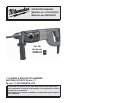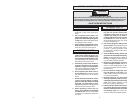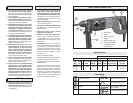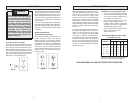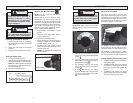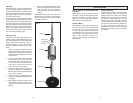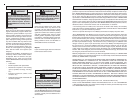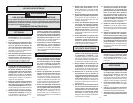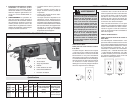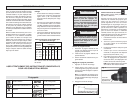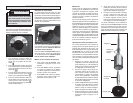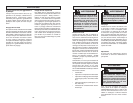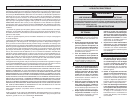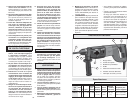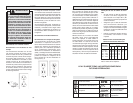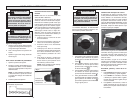
10 11
Using Core Bits
Core bits are useful for drilling large holes for
conduit and pipe. MILWAUKEE Heavy-Duty
Thin Wall Core Bits have heat treated steel
bodies with durable carbide tips. They are
specially designed for fast, accurate drill-
ing with combined hammering and rotary
action.
1. Clean and lubricate the threads on the
adapter and core bit as indicated (Fig. 6)
to make later removal easier. Screw the
threaded end of the adapter into the rear
of the core bit.
2. Push the guide plate onto the pointed
end of the center pin. Insert the center
pin with guide plate a ssembly into to the
core bit. Be sure the small end of the
center pin is securely placed into the
hole in the center of the adapter.
3. Insert the adapter into the bit holder of
the tool as described in “Inserting Drill
Bit or Chisel”. Set the rotary hammer/drill
lever to rotary hammer.
4. Press the center pin fi rmly against your
center mark, hold the tool fi rmly and pull
the trigger.
5. After drilling to about the depth of the
core bit teeth, remove the center pin and
guide plate from the core bit. Resume
drilling.
Adapter
Core Bit
Center Pin
Guide Plate
Clean and
lubricate
threads
Fig. 5
Operating
Position the tool, grasp the handles fi rmly
and pull the trigger. Always hold the tool se-
curely using both handles to maintain control.
This tool has been designed to achieve top
performance with only moderate pressure.
Let the tool do the work.
If the speed begins to drop off when drilling
large or deep holes, pull the bit partially out of
the hole while the tool is running to help clear
dust. Do not use water to settle the dust since
it will clog the bit fl utes and tend to make the
bit bind in the hole. If the bit should bind, a
built-in, non-adjustable slip clutch prevents
the bit from turning. If this occurs, stop the
tool, free the bit and begin again.
6. After you have fi nished drilling the hole,
hold the tool upwards, pointing it away
from your body, and run it briefly in
forward to loosen the core bit from the
adapter.
MILWAUKEE Heavy-Duty Thin Wall Core
Bits drill holes up to 3" deep. To make deeper
holes, remove the bit, break and remove the
core. Resume drilling.
APPLICATIONS
Drilling in Wood, Composition Materials
and Plastic
When drilling in wood, composition materials
and plastic, select the drill operating mode.
Start the drill slowly, gradually increasing
speed as you drill. Select low speeds for
plastics with a low melting point.
Drilling in Metal
When drilling in metal, select the drill operat-
ing mode. Use high speed steel twist drills
or hole saws. Use a center punch to start
the hole. Lubricate drill bits with cutting oil
when drilling in iron or steel. Use a coolant
when drilling in nonferrous metals such as
copper, brass or aluminum. Back the ma-
terial to prevent binding and distortion on
breakthrough.
Drilling in Masonry
When drilling in masonry, select the rotary
hammer operating mode. Use high speed
carbide-tipped bits. Drilling soft masonry
materials such as cinder block requires
little pressure. Hard materials like concrete
require more pressure. A smooth, even fl ow
of dust indicates the proper drilling rate. Do
not let the bit spin in the hole without cut-
ting. Do not use water to settle dust or to
cool bit. Do not attempt to drill through steel
reinforcing rods. Both actions will damage
the carbide.



